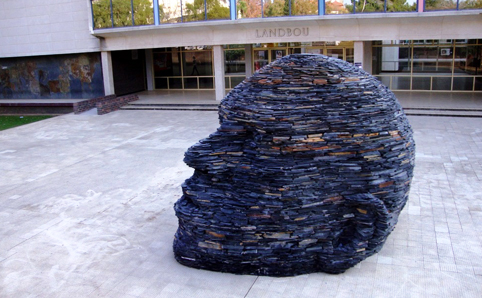Latest News Archive
Please select Category, Year, and then Month to display items
15 March 2022
|
Story Rulanzen Martin
|
Photo Supplied
 The keynote speakers are Dr Khabele Motlosa (right), Senior Lecturer in the Department of Political and Administrative Studies at NUL, and leading Pan-Africanist scholar Prof Molefi Kete Asante(left).
The keynote speakers are Dr Khabele Motlosa (right), Senior Lecturer in the Department of Political and Administrative Studies at NUL, and leading Pan-Africanist scholar Prof Molefi Kete Asante(left).
The
Centre for Gender and Africa Studies (CGAS) at the University of the Free State (UFS), together with the
National University of Lesotho (NUL) and the Academic Forum for Development of Lesotho, is hosting an online think tank on the transnational communities of the Lesotho-South Africa border from 19 to 21 March 2021. The theme of the conference is
Lesotho and South Africa: a clarion call for a Pan-Africanist future.
Dr Munyaradzi Mushonga, Programme Director: Africa Studies Programme in CGAS, is the convenor of the conference and is also leading the UFS borderlands panel. The borderlands project is jointly funded by the Office of the Dean: Faculty of the Humanities at the UFS, and the National Institute for the Humanities and Social Sciences (NIHSS).
For more information and to register for the conference, click here

Ancient methods used for new sculpture
2012-05-11
 |
|
Angus Taylor sculpture “Van Hier tot Daar”
Photo: Supplied
10 May 2012
|
An Angus Taylor sculpture “Van Hier tot Daar” was installed at the Agricultural Building on the Bloemfontein Campus. The sculpture is a three-metre head (14 times larger than life-size) made out of stacked Marico slate. It weighs approximately 15 tons and took two weeks, after months of preparation, to be built on site. The portrait is generic as Taylor has used various people from his studio as reference.
Ms Angela de Jesus, Curator of the Johannes Stegmann Art Gallery on campus, says the process of stacking stone refers to one of the first methods used by humans to create an object or mark a place of significance in three dimensions. The sculpture speaks not only of man’s evolutionary development, but also of how humans are physically and psychologically connected and interdependent on the land. The sculpture that emerges from the ground, although monumental in scale, becomes somewhat of an anti-monument as it is non-representative and it is without a plinth.
The sculpture is the 16th artwork to be installed on the Bloemfontein Campus by the Lotto Sculpture-on-Campus Project funded by the National Lottery Distribution Trust Fund.